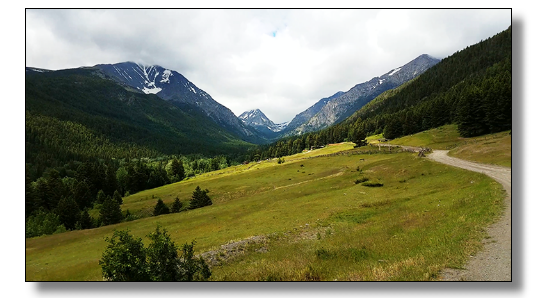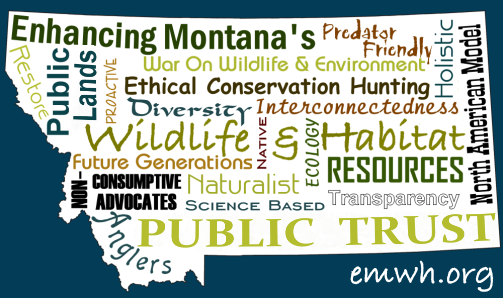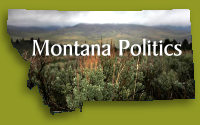FWP Bison Discussion Group Meeting
Billings, MT
July 15 & 15, 2014
page under construction
FWP Bison Discussion Group Billings July 2014 Agenda FWP Bison Discussion Group Participants
|
|
Day 1 - July 14 1. 2. Dyrck Van Hyning presented a map of an area of the CMR as a proposed introduction site on public lands which do not have any private grazing leases, so there is no threat of grazing competition. 3. 4. Group 1 discussed a Private Public partnership with private lands. They brought up Memorandum of Understandings (MOU's) that could be signed with private landowners. Hunting on private lands could include outfitters, profit model discussed. 10:02 Group 2 discussed Tribal Approach, Large Private Landowner and Shared Stewardship models. At 13:27 Keith Aune stated, "We many need an entire transformation in the standard North American Model for bison. And I am one of these guys, I get my butt kicked many times at WAFWA (Western Association of Fish and Wildlife Agencies) and AFWA (Association of Fish & Wildlife Agencies) and other wildlife meetings where I challenge this business that there is this North American Model, and it's the only working model. Bison are challenging us to say there may be something different we have to do. And that could include different business arrangements. And I'm not saying we commercialize wildlife, but I'm saying there might be ?. We have to be very creative about the business model, it has to be something new. I dont have the answer for you, what that is, but I think all of the group there was some interesting ideas of what that might look like. I think it could be some fruit for discussion maybe tomorrow or probably on for the next several decades, but we need a mew model for this species and it's really challenging for us... I'm talking about a new model. If you tag it the Colorado ? or some other state I might get my butt kicked again. I think that's what the wildlife agencies are struggling with right now, all across North America regularly WAFWA and AFWA, it's a really tough discussion. These agencies are transforming right now and it's a hard time. And the old Model is not working that good." 21:13 Group 3 discussed a Pilot Project Confinement, Private Landbased Experiment. FWP would lease private land at market rates for publicaly owned bison. Front end costs should be private funding. Litigation Free Zone, Sunset in 5 years. Ginny Tribe stated, Publicly owned animal in Montana means that it could be hunted. And a publicly owned animal on private land could be outfitted." At 32:40 Senator Taylor Brown discusses Group 3's "publicly owned" label. "Let me say one more thing ? Here's what I was thinking to myself. It's about trust and commitment and responsibility, that's what we're missing is commitment to do what you say you're going to do, responsibility to actually do it and trust that they are going to do it. What would it take for our livestock people to say ? , what would they take so we could go with “public ownership” and don't call them bison? Give us boundaries, give us sound resource science, give us private property protection and give us responsibility and commitment and then we might go with that. How about the wildlife people? What about the wildlife? Well basically you've got to call them wildlife. You cant call them “public owned”. Would it be okay if we called “public owned” if we gave you public hunting opportunities, access by the public so they could enjoy them, management by Fish, Wildlife & Parks, increased numbers of animals and genetic diversity. If you got all those things, would you be okay with the label?”" 32:24 Group 4 discussed a section of public lands like the CMR, FWP funded, disease free - no Yellowstone bison to take disease off the table. Small - 100 animals, public land only, with small amount of animals - limited hunting opportunities. Second option big alternative - largest grass landscape where livestock are not grazing, herd size about 1000 animals, hunting becomes a key management tool. Zone approach - an area where bison are tolerated and one where they are not. Manage wild bison as wildlife as other Montana wildlife species. Management with FWP commission and FWP. Wildlife is publicly owned, possible Cooperative Agreements.
|
Day 2 - July 15 audio being converted, transcription, please be patient. 1. 2. 1. Private Public Partnership - Identify a landowner or group of landowners willing to accept specific management responsibility of publicaly owned bison. Would involve a Memorandum of Understanding. The most important desired outcome is the establishment of a viable population that is genetically robust. Viability and genetic robustness 500-1000 individuals. Some science indicates 1000+ to ensure genetic robustness. Scale is important. Hunting opportunity, access by the public, no disease threat to livestock, based on sound resource science. Acceptable burden to the taxpayer. Could be business model integrated, no impacts to adjacent landowners, follow existing law SB 212 ( 87-1-216), containment. Large tract of land. Management Plan that is accepted. Citizens Management COmmittee - authorized. Easy exit strategy. Properly scaled, extended period of time, 10 year period of time. Publicly owned wild bison, considered wildlife working with MOntana Fish, Wildlife & Parks. Discussion: Incentives & benefits for landowner, business proposition. end time stamp 16:11 2. Government to Government Partnership, focuses on Tribal governments between the State of Montana and Tribal governments - Respect Tribal sovereignty and their culture, to build a new relationship with the tribes, restore bison to Indian Country - a culture, heritage that was taken away from them. Restore Tribal cultural connections with the bison. Bison would be managed within the boundaries of the reservation. A Tribe in Montana that can meet these criteria. National groups could help Tribes so the model is successful. Containment, population control, disease free, genetics, population around 1000 head. Tribes would own bison. State or Ntional Bison Summit to explain to the public. Discussion: Public hunting opportunities? Irvin Carlson stated there already exists opportunities for people to buy outside hunting permits that belong to the Tribe. Access for hunting, revenue sharing. Mike Volesky stated that wildlife is not owned, it's a jurisdictional thing. end time stamp 35:30 3. Largest Public - Confict Free Landscape - Not dropping bison in on existing cattle operation, creating conflict. We know the CMR is there,... may be other landscapes. Build herd objective out of available grass, 1 bison per 100 acres > 100,000 acres = 1,000 bison. Develop emergency strategy, drought, fire. Largest achievable herd size. Citizen Management Group. Maximum hunting opportunities for both the public and the Tribes. Plan for hunting opportunities. Develop resource monitoring system. Containment. Funding - primarily public. Budget for future, 5 year review. FWP is responsible. Do a baseline survey and study before beginning, consider local economics. Discussion: Game Damage Laws are specific to food stores. Additional legislation would have to be created to cover any bison compensation for damage. end time stamp 55:00 4. Private Land Centered Relocation Alternative - Desired outcome to inroduce a managed, experimental population of bison, in a manner that sustains the existing rural community in land resources, in a way that is good busniess. Sustain and improve range conditions. Public access to a quality fair chase hunt. Real economic benefits do accrue to the local economy. Project self funding. Minimize impacts to adjacent lands. Program sustains bison numbers in objective. Year round bison use. Containment. Supported by local people. Management board. Sunset in 5 years. Litigation free zone. Least disruption to current livestock. Lease or rent from private landowner - business model, make deal attractive. end time stamp 1:06:58 5. No Action Alternative - Continue as current. Avoid local urban conflicts, avoid displacement. Bison objectors will not boycott Block Management. Social conflict will continue without bison introduction, widening the cultural gap. Miss any economic benefit that could result. State and local people could lose their voice to a federal action - no ownership control in process. end time stamp 1:11:06 Discussion: FWP Commissioner Richard Stuker stated that if bison were re-introduced, landowners were threatening not just pulling out of Block Managment, but of cutting off all access to and through their lands. 3.
|
Advisory
panel hears concerns about bison reintroduction from public
by Brett French Group
offers up ideas to formulate new state bison management plan
by Brett French Group member Ron Moody, a public hunter and former Fish and Wildlife commissioner from Lewistown, agreed. 'When you are declaring "my stand is going to be no bison, no way," we’ll be in the same position as when they reintroduced wolves. We could have done it our way. Think about that.' " |
Your Advertisement Here |
Site designed and maintained by Kathryn QannaYahu




